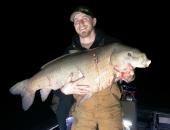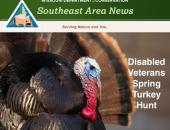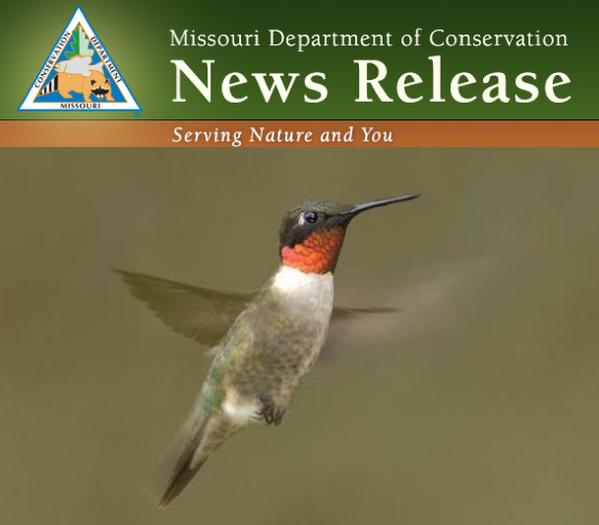
“Hummingbird migration all depends on the weather,” MDC Wildlife Ecologist Brad Jacobs said. “This year’s migration should be about average for hummingbirds and they should be increasing in numbers over the month of April.”
Jacobs noted a great website map from hummingbirds.net to visit to see when and where hummingbirds are migrating: http://bit.ly/1cCTWae. The hummingbird migration map shows locations of where ruby-throated hummingbirds have been spotted already this year in North America. The website allows visitors to help out with this by entering the dates and exact locations where people have spotted hummingbirds.
Just like most birds, hummingbirds typically migrate south in early fall and migrate back north in the spring.
“Our hummingbirds begin their southward migration in mid-August and most are gone by early October,” Jacobs said. “A few overwinter in extreme southern coastal states, with most wintering from southern Mexico to Costa Rica. Migration means some of them fly nonstop for 600 miles from the Gulf coast of the U.S. to the Yucatan Peninsula over the Gulf of Mexico. The often lose half their body weight during this trans-Gulf, 24-hour flight.”
Early spring migrant hummingbirds in Missouri rely on sap oozing from sapsucker-drilled holes and insects for food. With warmer weather they soon will switch to eating nectar from many different kinds of flowers later in spring, which gives them energy needed to catch insects all day long to feed their young.
Hummingbirds are more than just a delight to watch flying around, they also play a very important part in our ecosystem.
“Hummingbirds are important pollinators for many species of plants that require just such a long-billed pollinator,” Jacobs said. “Because of their small size, hummingbirds also risk ending up as food for many predators such as, large insects, spiders, birds, and frogs.”
Hummingbirds are summer residents throughout the state either around nectar feeders outside homes and in parks and gardens. Hummingbirds nest in wooded areas, and are frequently observed near forests, and streams.
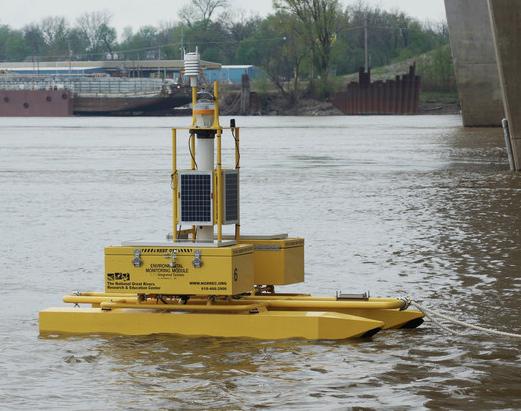
The local buoy is one of seven buoys placed in various places along the Mississippi River housing water quality and weather monitoring equipment. The Cape Girardeau buoy is monitored by Molly Sobotka, MDC resource scientist.
“This buoy allows us to monitor the water for oxygen, temperature, nutrients, and clarity and collects data on wind and sunlight,” Sobotka said. “All of this information helps us understand the water quality in the river, regional differences in river reaches, and how sediments and nitrogen flow through the system.”
Sobotka said data from the buoy will help scientists understand how major events like floods impact the river in real time.
“It takes hourly water quality and weather data and transmits it to the project server,” she said. “By using the buoy, we can collect data during floods or storms when we would otherwise have trouble collecting it ourselves.”
Ultimately, the GREON project has a goal of establishing a network of identical water quality monitoring buoys in great rivers around the world. The work in Cape Girardeau is an important preliminary step in establishing this network.
The monitoring station is marked with reflective tape and lights for nighttime visibility. The monitoring equipment is fragile and difficult to replace and the scientists request that boaters, anglers and hunters avoid disturbing this equipment.
For further information, contact Sobotka at the Big Rivers and Wetlands Field Station, at Molly.Sobotka@mdc.mo.gov or (573) 243-2659, extension 1048.

Dexter, Missouri - U.S. Senator Roy Blunt’s staff will host a Mobile Office on Tuesday, April 12, 2016, from 10:00am to 11:00am at the Dexter Chamber of Commerce.
Mobile Offices are opportunities for Missourians to discuss their questions or concerns with the federal government one-on-one with members of Senator Blunt’s staff.
Senator Blunt’s Columbia office also extends one-on-one service to all Missourians who have an issue with a federal agency or need additional assistance.
To reach the Senator’s Office of Constituent Services, please call at (573) 442-8151 or send a letter to 1001 Cherry Street, Suite 104, Columbia, Missouri 65201.
What: Senator Blunt's Staff Hosts Mobile Office
When: Tuesday, April 12, 2016 from 10:00am to 11:00am CT
Where: Dexter Chamber of Commerce
515 W Market St #B
Dexter, MO

Dexter, Missouri - Bulk trash pickup is being offered by the City of Dexter each Friday in April.
"Red Tags" may be purchased at City Hall or Harp's Grocery Store for furniture or other bulky items for $1.00 each.
Major appliances such as refrigerators, stoves, washers, dryers, and hot water heaters require a "Blue Tag" and can be purchased at City Hall or Harp's Grocery Store for $10.00. There is a limit of four (4) items to be picked up.
"Red Tags" may also be purchased at City Hall or Harp's Grocery Store for YARD WASTE pickup.
You MUST call the Water Department at (573) 624-5527 by Thursday of each week to schedule either the bulk trash or yard waste pickup (please one call per household).
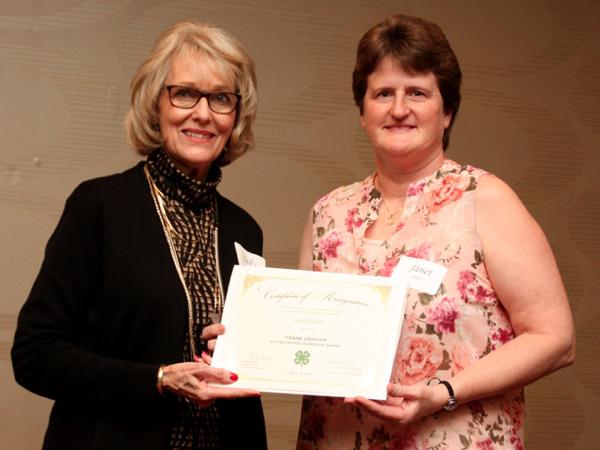
Columbia, Missouri - Janet Johns of Stoddard County, Missouri was named a 2016 Frank Graham 4-H Volunteer Leadership award winner by the Missouri 4-H Foundation on March 18th. Janet was recognized for her commitment to the University of Missouri Extension 4-H Youth Development Program.
“It is our great pleasure to honor Janet with the Frank Graham Volunteer Leadership Award for her dedication to Missouri 4-H,” said Dr. Marla Tobin, chair of the Missouri 4-H Foundation board of Trustees. It is volunteers like Janet who have made Missouri 4-H the quality experience for which it is so well known, and we are indebted to Janet for her service.”
Johns has served Stoddard County 4-H for 18 years, working with members of the Star Banner 4-H club and assisting the Stoddard County Extension Center with school field trips and events. She helps with donations for Ag Day at the county fair and 4-H and FFA Farm Safety Day. Johns has also hosted exchange students from Japan and Armenia through the 4-H International Exchange program. In addition, Johns helps with community service outings, recognition banquets, Show Me Wares projects, and more.
The Frank Graham 4-H Volunteer Leadership Award recognizes volunteers who work to guide our youth. The award is named for Frank Graham, who served as director of the MU Extension 4-H Center for Youth Development from 1958 to 1975. During his 33 years of service, Mr. Graham was an avid supporter of volunteer leadership, believing that volunteers are the foundation of the 4-H program.
About the Missouri 4-H Foundation: for more than 65 years, the Missouri 4-H Foundation has been managing funds for the MU Extension 4-H Youth Development Program, providing higher education scholarships and recognizing 4-H volunteers. MU Extension 4-H is a community of more than 260,000 youths from across Missouri learning leadership, citizenship and life skills.

